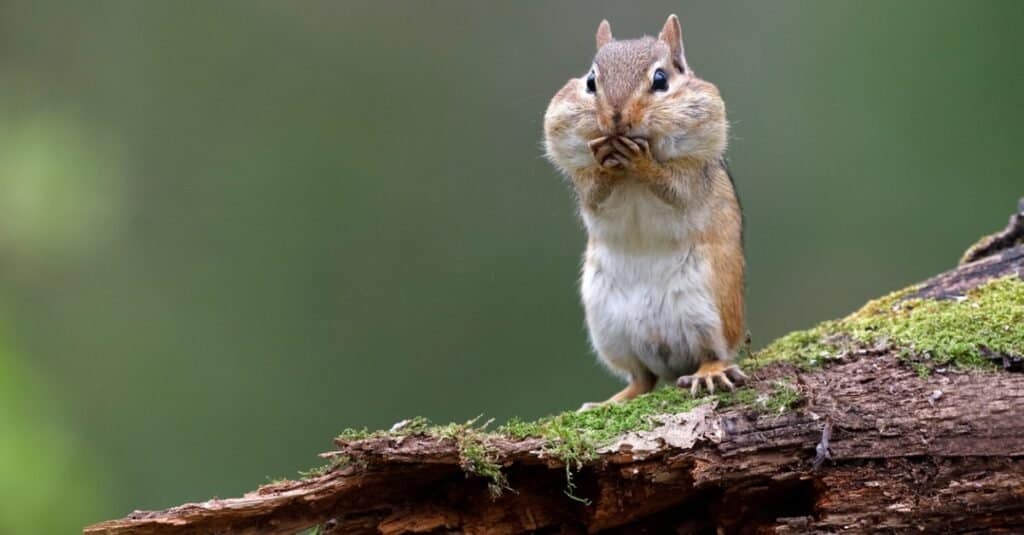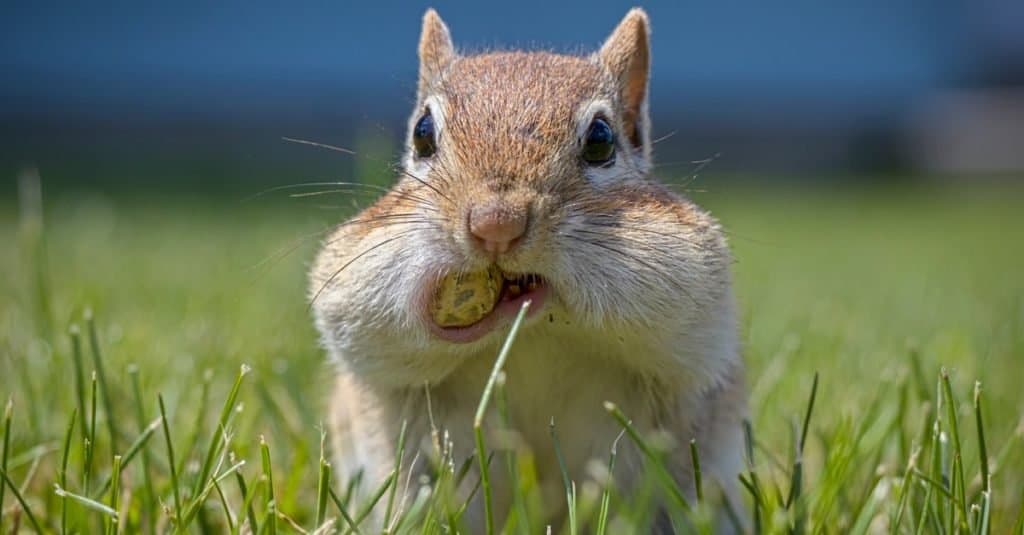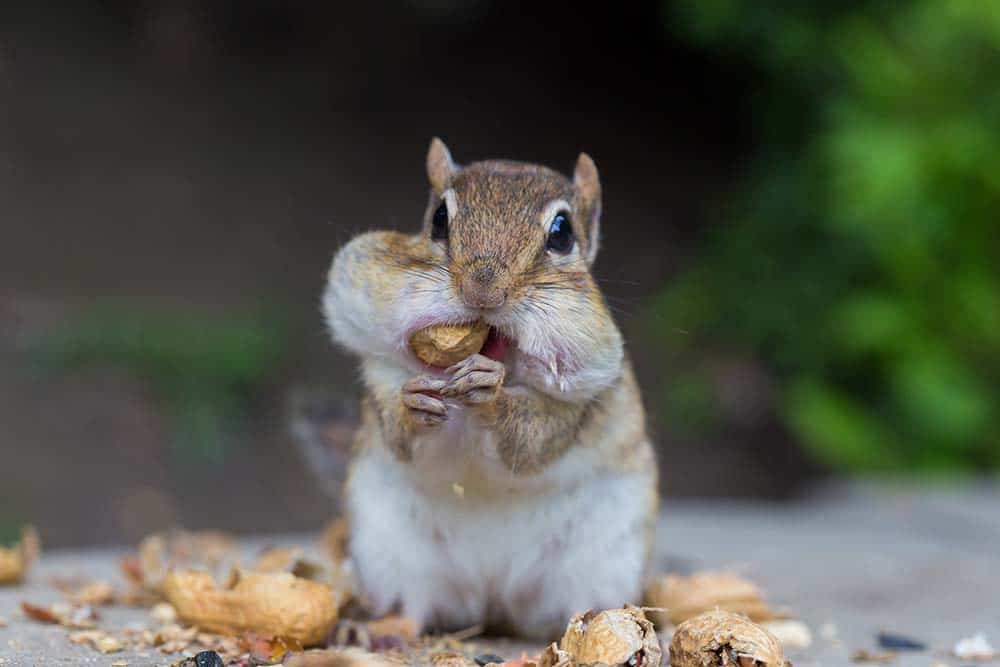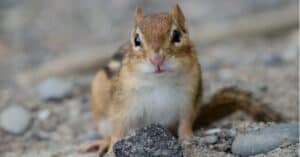Chipmunks have unique cheeks that can grow up to the size of their body! Have you ever wondered how this happens or why chipmunks stuff their cheeks?
Chipmunk cheeks contain pouches, or pockets, designed to hold food. They can stretch up to three times the size of the chipmunk’s head and hold up to 12 acorns! This allows chipmunks to prep for winter in just two days.
Learn more about cheek pouches and their uses in this article. We’ll tell you everything you’ve ever wanted to know!
Do Chipmunks Have Fat Cheeks?

Chipmunks have cheek pouches to carry food.
©iStock.com/BrianLasenby
Chipmunks have fat cheeks because they have cheek pouches. They use these cheek pouches to store food until they can deposit the food in their den. This allows them to gather mass amounts of food very quickly—which is very important to them. Chipmunks are food hoarders!
Cheek pouches vary in different animals, sometimes reaching the shoulders or sides of the neck. In chipmunks, the cheek pouches extend to the shoulders and stretch very wide. Another great thing about cheek pouches is that chipmunks can run away from predators if needed without leaving their food behind. Otherwise, they could only eat one item at a time and would have to abandon it if a predator came along.
Chipmunks also use their cheek pouches to contain dirt when digging their burrows. They later deposit the dirt on the ground outside. This is why chipmunk holes don’t have mounds of dirt surrounding them. Lastly, cheek pouches allow chipmunks to stock up for winter in just two days.
How Big Can Chipmunk Cheeks Get?

Chipmunk pouches can expand to make their head look three times larger than usual!
©Fiona M. Donnelly/Shutterstock.com
Chipmunk cheeks can grow up to three times the size of their heads! They can hold onto mass quantities of food as big as themselves. Things a chipmunk might store in their pouches include seeds, nuts, grain, fruit, insects, fungi, bird eggs, and even baby birds or mice.
Why Do Chipmunks Fill Their Cheeks?
Chipmunks fill their cheeks in order to hoard food quickly. They don’t tend to eat while out and about but instead tuck the food away for eating in the safety of their dens. The outside world is dangerous to these tiny animals, with predators everywhere. The quicker they can scurry around collecting their meal, the safer they’ll be.
Another thing chipmunks do to avoid harm is to rely on others. When they see a predator, they make a sound that tells other chipmunks whether it’s on the ground or in the air. When chased by a predator, chipmunks make yet another noise to warn the surrounding colony.
The other purpose for chipmunk cheeks is to dig burrows. They dig far underground with their claws, stuffing dirt into their cheek pouches as they go. When they’re finished, they go back outside and leave the dirt on the surface. This makes them neater diggers than most other animals that simply leave the dirt where it falls.
How Do Chipmunks Empty Their Pouches?

Chipmunks empty their cheek pouches into their burrows.
©colacat/Shutterstock.com
Chipmunks squeeze their cheek pouches with their front paws to empty them. This efficiently empties the food into their dens and takes very little time. We don’t often get to see chipmunks empty their cheek pouches since it happens below ground. Rest assured, it’s incredibly cute!
Where Do Chipmunks Store Food?
Most chipmunk species store food in their dens. Chipmunk burrows consist of an underground nest, where they sleep, surrounded by runs that lead to other crevices. One is used for going potty, another for giving birth, and the rest for hoarding food!
Chipmunks often gather much more food than they need to survive and hide it away in their burrows. Just one chipmunk lives in each burrow because they aren’t social animals.
Do Chipmunks Hibernate?
Chipmunks don’t hibernate. Instead, they go into a similar state called torpor. They go into a hibernation-like sleep for a few days at a time, during which their systems slow dramatically. Their hearts beat just four times a minute, and their body temperatures drop to around 40 degrees Fahrenheit.
Every few days, though, they wake to use the bathroom and eat. Their body temperature also raises at this time. Most of their activity happens inside their burrow since they have their kitchen and bathroom all built-in! You might see a chipmunk scurrying outside on warm winter days, but it’s pretty uncommon.
The photo featured at the top of this post is © Fiona M. Donnelly/Shutterstock.com
Thank you for reading! Have some feedback for us? Contact the AZ Animals editorial team.







